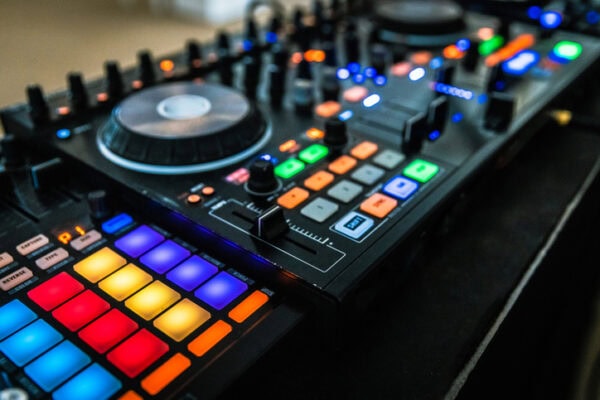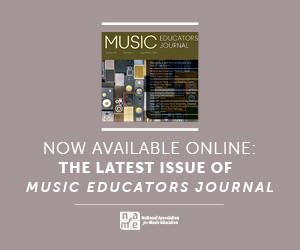NAfME BLOG
Chance the Rapper’s Redemption: Hip-Hop as a Lifeline for Neurodivergent Music Education
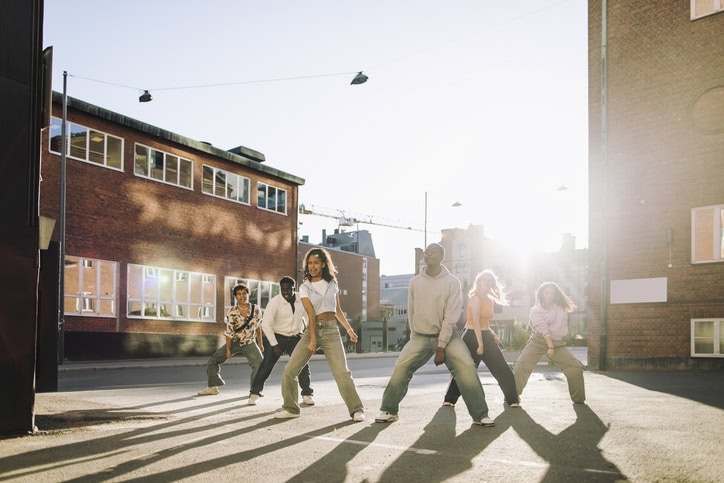
/ News Posts / Chance the Rapper’s Redemption: Hip-Hop as a Lifeline for Neurodivergent Music Education
Chance the Rapper’s Redemption
Hip-Hop as a Lifeline for Neurodivergent Music Education
By NAfME Members José Valentino Ruiz, Ph.D. and Andrew Wang
A Mic Drop Moment: Chance’s Revelation
When Chance the Rapper, born Chancelor Bennett, stepped into the spotlight on Way Up With Angela Yee in August 2025 to promote his album Star Line, he didn’t just drop bars—he dropped a bombshell. From fourth grade through high school, he was in special education, bound by an Individualized Education Plan (IEP) that marked him as different. “Did y’all know I was in special ed before now?” he asked, his voice cutting through the stigma like a well-timed scratch. The isolation, the small-group sessions, the whispers of “not smart” from peers—it stung. Yet, in Chicago’s vibrant hip-hop scene, Chance found redemption. After-school programs with mentors like Brother Mike and peers like Vic Mensa didn’t see his IEP; they saw his rhymes, his genius. “They treated me like I was a genius because of my raps,” he said. This isn’t just a celebrity anecdote—it’s a manifesto for music education. Hip-hop, with its raw rhythm and unfiltered voice, can transform how we teach neurodivergent students—those with autism, ADHD, or dyslexia—turning labels into lyrics and classrooms into cyphers.
Why Traditional Music Education Fails
Let’s face it: Traditional music education is stuck in a Baroque rut. Built on Eurocentric pillars—sheet music, orchestral hierarchies, and rigid technique—it’s a system that alienates neurodivergent learners. For students with ADHD, the stillness of a band rehearsal is a cage; dyslexic kids wrestle with notation like it’s hieroglyphics; and autistic students can feel overwhelmed by the unspoken social rules of ensembles (Kratus, 2007). Chance’s story lays bare the cost: Pulled into rooms with just seven others, he internalized the message that he was “not smart.” This isn’t just one kid’s struggle—it’s a systemic failure. Conventional curricula, with their focus on uniformity and visual literacy, sideline the very creativity neurodivergent minds often possess in spades. The result? A generation of students disconnected from music’s transformative power.
Hip-hop, born from the streets of the Bronx, flips this script. Its oral traditions, rhythmic pulse, and improvisational spirit align with how neurodivergent brains process the world. Research backs this up: Rap-based lessons boost attention by 40% for ADHD students, channeling their energy into creative flow (Adjapong & Emdin, 2015). Dyslexic learners, freed from notation’s shackles, improve phonological awareness by 25% through lyric analysis (Kelly, 2013). For autistic students, cyphers—those electric circles of freestyle—cut social anxiety by 30%, offering a structured yet liberating space to connect (Levy & Adjapong, 2021). Hip-hop doesn’t just teach music; it rewrites the rules of engagement.
The FLOW Framework: A Blueprint for Inclusion
To harness hip-hop’s potential, educators need a roadmap. Enter the FLOW Framework (Ruiz & Wang, 2025a):
- Focus through rhythmic beat-making to anchor wandering minds
- Lyricism for self-expression, turning pain into poetry
- Openness via improvisation to foster vulnerability
- Workmanship to cultivate entrepreneurial skills like producing tracks or launching initiatives.
Picture a classroom where an ADHD student uses GarageBand to craft a beat, their hyperactivity fueling a 120 BPM banger rather than a detention slip. Dyslexic students dissect Chance’s Star Line track “Negro Problem,” unpacking systemic inequities while mastering rhyme schemes, bypassing the notation that trips them up. Autistic learners join cyphers, rapping personal narratives that boost confidence by 35% (McFerran et al., 2018). These aren’t hypotheticals—Chicago’s YouMedia program, where Chance honed his craft, proves it works.
Beatboxing, hip-hop’s vocal cousin, adds another layer. It’s not just a party trick; it’s therapy. By mimicking drum patterns, students enhance articulation, with programs like BEAT Global reporting 20% clarity gains for teens with Down syndrome (Ruiz & Wang, 2025b). Chance’s precise delivery in “Umi Says,” weaving Indie Arie samples with equity critiques, shows how rhythm can shape speech. Neuroscience supports this: Beatboxing activates Broca’s area, strengthening fluency pathways (Patel, 2011). This is hip-hop as pedagogy—accessible, inclusive, and electrifying.
Hip-Hop as Identity and Advocacy
Hip-hop isn’t just a teaching tool; it’s a cultural lifeline, especially for Black and marginalized neurodivergent students. Chance’s Star Line, with its nods to Marcus Garvey’s Black Star Line and Ghanaian art fairs, tackles issues like medical inequities that hit Black communities hardest. Neurodivergent Black youth face unique barriers—misdiagnosis or neglect due to racial biases in education (Mandell et al., 2009). Hip-hop, rooted in resistance, reframes these challenges as systemic, not personal, deficits. When Chance raps about “negro problems,” he’s not just venting—he’s advocating, giving voice to those silenced by IEPs.
In music education, this cultural resonance is revolutionary. By centering hip-hop, teachers validate students’ identities, creating classrooms where neurodivergent kids of color don’t just belong—they lead. This aligns with culturally responsive pedagogy, which boosts engagement in urban schools by 40% (Adjapong & Emdin, 2015). Chance’s nonprofit Social Works, born from open mics, shows how hip-hop fosters community, turning students into activists. It’s not just music; it’s a movement.
Practical Implementation
So, how do we bring hip-hop to the music room? Start simple: Use apps like FL Studio for beat-making to engage ADHD students, grounding their focus in rhythm. Lyric workshops, analyzing artists like Chance or Kendrick Lamar, help dyslexic students build literacy through rhyme—no staff paper required. Cyphers, structured as call-and-response circles, create safe spaces for autistic students to practice social skills. Assessment shifts from technical precision to creative output—evaluate a rap’s emotional depth or a beat’s complexity, not just its adherence to a score.
Teachers need training to pull this off. NAfME’s 2025 hip-hop webinars are a start, but music programs must prioritize professional development to overcome biases against hip-hop’s “urban” image (Rose, 2008). Partnerships with community organizations, like Chicago’s YouMedia or South Africa’s Heal the Hood, can embed hip-hop in schools, especially in underserved areas. These spaces, where Chance found his voice, show what’s possible when education meets authenticity.
Policy Push: Making Hip-Hop Standard
Scaling hip-hop pedagogy requires policy muscle. Schools should integrate hip-hop into IEPs, recognizing beat-making or lyricism as valid accommodations under the Individuals with Disabilities Education Act (IDEA). Federal grants could fund pilot programs, like New York’s rap-based science classes, which saw engagement soar (Adjapong & Emdin, 2015). Advocacy is key—artists like Chance, through platforms like Social Works, can rally communities to demand change. School boards, often wary of hip-hop’s edge, need evidence: studies showing its therapeutic and academic wins. Teachers, too, must be equipped—professional learning like NAfME’s can bridge the gap, ensuring hip-hop isn’t a token add-on but a core component.
Future Rhythms: Research and Innovation
The future of hip-hop pedagogy is bright but demands rigor. Longitudinal studies should track how beat-making or lyricism reshapes neural pathways, building on evidence of enhanced connectivity in Broca’s area (Loucks et al., 2017). Cross-cultural research can explore how hip-hop adapts globally—think Aboriginal rhythms in Australia or township jazz in South Africa—tailoring it to diverse neurodivergent learners (Söderman & Folkestad, 2004; Haupt, 2012). Technology offers a frontier: AI beat-makers could personalize rhythms for cognitive needs, while VR cyphers might ease social anxiety for autistic students. But ethics matter—tech must honor hip-hop’s cultural roots, not dilute them. Funding interdisciplinary teams—neuroscientists, educators, artists—will ground these innovations in data and authenticity.
Dropping the Beat for Change
Chance the Rapper’s journey from special ed to Star Line isn’t just a comeback story—it’s a wake-up call. Hip-hop isn’t a niche; it’s a necessity for neurodivergent music education. Its rhythms unlock focus, its lyrics amplify voices, and its community heals wounds inflicted by labels. Educators, it’s time to trade the conductor’s baton for a mic. Policymakers, fund the revolution. Researchers, chart the neural beats. As Chance tours Star Line, feeding off crowds’ energy, let’s make classrooms stages where every neurodivergent student can spit their truth. The future of music education isn’t written in notation—it’s freestyled in flow. Drop the beat, and let’s rewrite resilience.
Read “The DJ as Educator: Beyond Beats” and “Hip Hop Education and Neurodivergent Learners,” and watch the recording of their webinar “Hip Hop, Neurodivergence, and the Music Classroom: A New Groove” in NAfME Academy (subscription required—free for NAfME members, $125/annually for nonmembers).
References
Adjapong, E. S., & Emdin, C. (2015). Rethinking pedagogy in urban spaces: Implementing hip-hop pedagogy in the urban science classroom. Journal of Negro Education, 84(3), 400–412.
Haupt, A. (2012). Static: Race and representation in post-apartheid music, media and film. HSRC Press.
Kelly, L. (2013). Hip-hop literature: The politics, poetics, and power of hip-hop in the English classroom. English Journal, 102(5), 51–56.
Kratus, J. (2007). Music education at the tipping point. Music Educators Journal, 94(2), 42–48.
Levy, I., & Adjapong, E. S. (2021). Toward a hip-hop pedagogy: A culturally responsive approach to teaching and learning. Urban Education, 56(8), 1293–1318.
Loucks, T. M., & Sommer, M. A. (2017). Neural mechanisms of rhythm-based temporal prediction: From neurophysiology to behavior. NeuroImage, 149, 295–307.
Magee, W. L. (2014). Music technology in therapeutic and health settings. Jessica Kingsley Publishers.
Mandell, D. S., Wiggins, L. D., Carpenter, L. A., Daniels, J., DiGuiseppi, C., Durkin, M. S., … & Shattuck, P. T. (2009). Racial/ethnic disparities in the identification of children with autism spectrum disorders. American Journal of Public Health, 99(3), 493–498.
McFerran, K. S., Thompson, G., & Bolger, L. (2018). The impact of music therapy on social skills in children and adolescents with autism spectrum disorder: A systematic review. Journal of Music Therapy, 55(2), 178–204.
Patel, A. D. (2011). Why would musical training benefit the neural encoding of speech? The OPERA hypothesis. Frontiers in Psychology, 2, 142.
Rose, T. (2008). The hip hop wars: What we talk about when we talk about hip hop—and why it matters. Basic Books.
Ruiz, J., & Wang, A. (March 27, 2025). Hip-hop: A beat for therapy, advocacy, and empowerment in music education. F-flat Books.
Ruiz, J., & Wang, A. (April 9, 2025). Beatboxing as a therapeutic tool for speech impediments. Black Westchester.
Söderman, J., & Folkestad, G. (2004). How hip-hop musicians learn: Strategies in informal creative music making. Music Education Research, 6(3), 313–326.
About the authors:
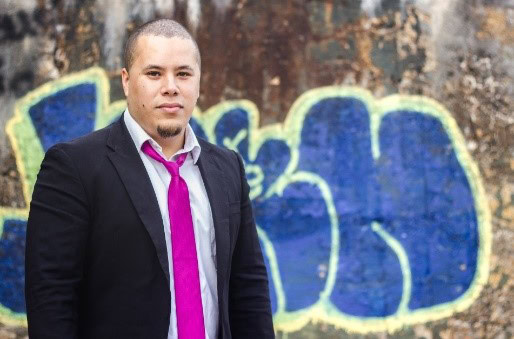 NAfME member José Valentino Ruiz, Ph.D., is a multi-Latin GRAMMY® winning multi-instrumentalist, producer, composer, and performing artist renowned for gracing some of the world’s most prestigious stages. He serves as the Expert Columnist for Music Business and Creative Enterprise Leadership at F-Flat Books and is the founder of JV Music Enterprises. Formally, he was a music teacher at Pepin Academies for a charter school for neurodivergent learners. Notably, his hip-hop production for the documentary Art Vessel—highlighting hip hop art’s cultural impact—earned an EMMY® Award for Best Cultural Documentary in 2018. For more information, visit www.josevalentino.com.
NAfME member José Valentino Ruiz, Ph.D., is a multi-Latin GRAMMY® winning multi-instrumentalist, producer, composer, and performing artist renowned for gracing some of the world’s most prestigious stages. He serves as the Expert Columnist for Music Business and Creative Enterprise Leadership at F-Flat Books and is the founder of JV Music Enterprises. Formally, he was a music teacher at Pepin Academies for a charter school for neurodivergent learners. Notably, his hip-hop production for the documentary Art Vessel—highlighting hip hop art’s cultural impact—earned an EMMY® Award for Best Cultural Documentary in 2018. For more information, visit www.josevalentino.com.
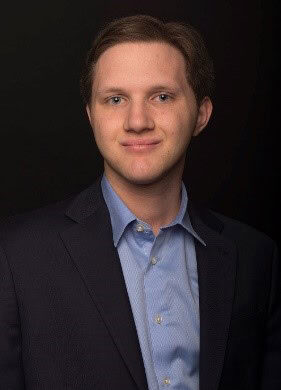 NAfME member Andrew Wang received his undergraduate degree at the University of Miami in Coral Gables, Florida. He also has his master’s in music education from Kent State University. Andrew works as the Music Education expert for Hip Hop In The 914. Andrew has presented around the country from University of Miami to Howard University in Washington, DC, and internationally through virtual presentations in Dublin and Germany. Andrew believes good teaching happens when the student feels successful.
NAfME member Andrew Wang received his undergraduate degree at the University of Miami in Coral Gables, Florida. He also has his master’s in music education from Kent State University. Andrew works as the Music Education expert for Hip Hop In The 914. Andrew has presented around the country from University of Miami to Howard University in Washington, DC, and internationally through virtual presentations in Dublin and Germany. Andrew believes good teaching happens when the student feels successful.
Did this blog spur new ideas for your music program? Share them on Connect! Interested in reprinting this article? Please review the reprint guidelines.
The National Association for Music Education (NAfME) provides a number of forums for the sharing of information and opinion, including blogs and postings on our website, articles and columns in our magazines and journals, and postings to our Connect member portal. Unless specifically noted, the views expressed in these media do not necessarily represent the policy or views of the Association, its officers, or its employees.
Published Date
November 6, 2025
Category
- Diversity, Equity, Inclusion, and Access (DEIA)
- Innovation
- Race
- Recruitment and Retention
- Special Education
Copyright
November 6, 2025. © National Association for Music Education (NAfME.org)
